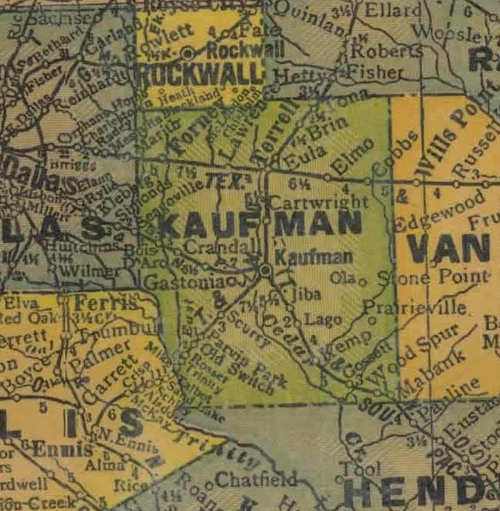Forney, Texas, Kaufman County, Antique Capital of Texas. (original) (raw)
Mural of Old Forney
Click on image to see full mural
Photo courtesy Clint Skinner, October 2021
History in a Pecan Shell
By 1870 settlement had begun in earnest. Storekeeper John C. McKellar opened the first store in the community that had been using the name Brooklyn, Texas. In 1873 residents applied for a post office under the name Brooklyn but it was rejected because Shelby Countians had thought of it first.
Also in 1873, the county seat of Kaufman, and the nearby town of Cedar Grove showed no interest in receiving a railroad connection from the Texas and Pacific Railroad, so the railroad came knocking at Forney's door.
In need of a new name for their post office and to curry favor with the railroad, Brooklynites honored John W. Forney by naming the community after him. Forney was the railroad's civil engineer and the one who decided where the rails would be laid. The community led a tranquil life throughout the decades, gaining population over time. The 1960 census reported 3,000, just before work started on the Forney Reservoir (later renamed Lake Ray Hubbard).
The 1980 census reported a population of 2,483 which increased to just over 4,000 for the 1990 census. It rose to 5,588 for the 2000 count, and 14,661 in 2010.
Mural of Old Forney full view
Click on image to enlarge
Photo courtesy Clint Skinner, October 2021
Historical Marker: Corner of Main and Bois d'Arc Sts., Forney
Forney
A Native American trail, sometimes referred to as the Kickapoo Trace, and early Anglo-American roads traversed this area prior to the settlement of the pioneer families of Isaac Briscoe and Jacob Sheltman in the mid-1840s. By 1871 a village called Brooklyn, which included a combined school, church, and lodge building, general store, saloon, and blacksmith shop, was established about one mile south of here. Brooklyn's business and housing activity shifted here after the Texas & Pacific Railroad extended its line through this area in 1873. A post office opened in 1873 and the town was renamed Forney for noted railroad official John W. Forney. By 1891 Forney had become a bustling town with more than 50 business establishments including a bank, opera house, and two hotels. Ranch and farm produce, including cotton, Bois d'Arc wood products, and the area's nationally recognized blackland prairie hay were shipped by rail at Forney and the town prospered. In the 1920s U.S. Highway 80 (The Dixie Highway) and an interurban railroad came through the town. Beginning with the Great Depression Forney's agricultural economy declined for several decades. Eventually Forney experienced a revival of growth as a bedroom community of Dallas, Texas.
1994

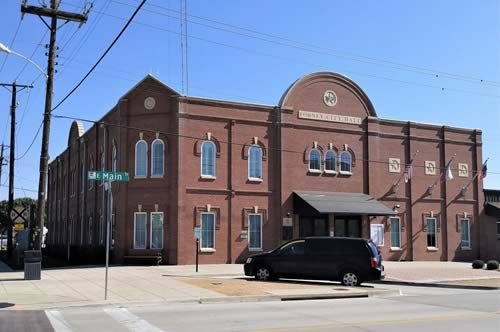
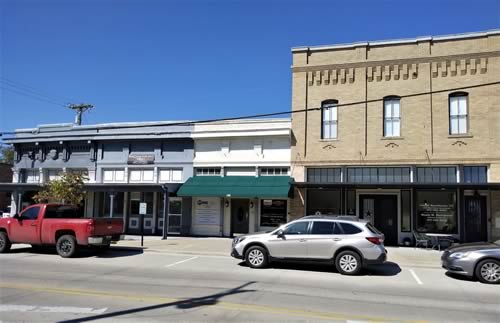

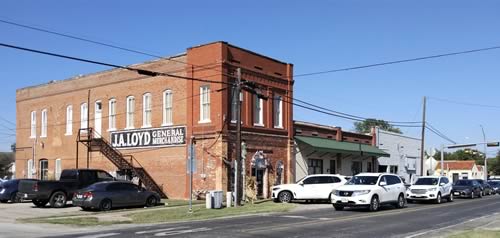
J.A, Loyd General Mercantile
Photo courtesy Clint Skinner, October 2021

FISD Administation Building
Photo courtesy Clint Skinner, October 2021
Historical Marker: 600 S. Bois d'Arc St., Forney
Forney Independent School District
Public education began in Forney (then named Brooklyn) about 1868 when a 16' x 16' room was built, serving as both a schoolhouse and Union church. Forney School District No. 9, formed in 1876, was part of a county-wide school system. In 1889 the first structure was replaced by a 2-story wooden school building. In 1899 the Forney Independent School District was formed. An imposing brick and stone building superseded the wooden structure in 1903. The present edifice was erected in 1938 by a WPA grant. Recent activities included the restoration of the 1938 Forney High School building.
1994
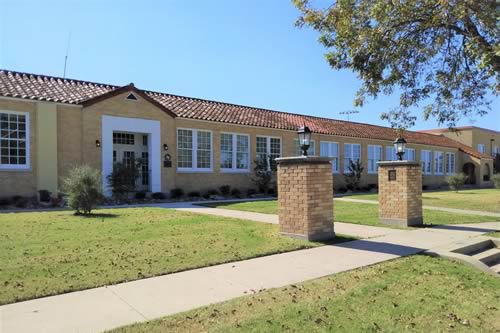
Historical Marker: 600 S. Bois d'Arc St., Forney
Forney High School Building
Forney's first schoolhouse was built here about 1868, and its first general store was built nearby by pioneer settler John C. McKellar in 1871. This building was erected by the Works Progress Administration (WPA) in 1938-39. Designed by WPA architect Hoke Smith, the Spanish Colonial revival style structure features a tile roof, multi-light windows, buff brick, and wrought iron and cast stone details. A high school was housed here until 1974 and a middle school until 1993.

Historical Marker: Corner of Bois d'Arc and Brooks St., Forney
First Presbyterian Church of Forney
This church was created by the merger of two congregations. Before the town of Brooklyn was renamed Forney, the Brooklyn Church of the Presbytery of Bacon of the Cumberland Presbyterian Church was organized in 1872. A second congregation, the Forney Presbyterian Church U.S. (Southern), began in 1883, and built a sanctuary on this site. Following the merger in 1919, the name was changed to First Presbyterian Church of Forney. A new red brick structure was dedicated in October, 1925, and the church continues to be a vital part of the Forney community.
1986
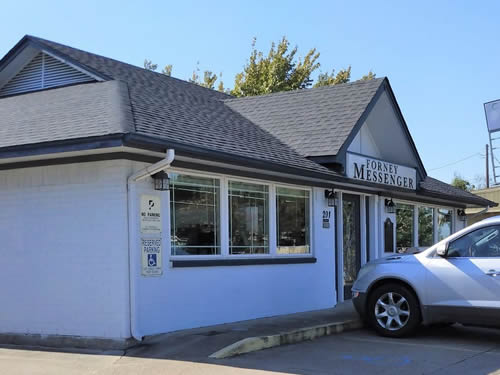
Historical Marker: 201 W. Broad St. (Old U.S. 80 and FM 688), Forney
The Forney Messenger
The Forney Messenger is the oldest newspaper in continuous operation in Forney. Founded in 1896 by M. J. Cox, the first issue was printed on April 16 and contained a personal column, school news, a local church directory, and news from surrounding communities. In 1919 the Messenger was merged with the Forney News and was known as the Forney News and Messenger until 1921, when it again became the Forney Messenger. For many years the Messenger has provided residents of Forney and the surrounding area with news of local interest.
Texas Sesquicentennial, 1836 - 1986
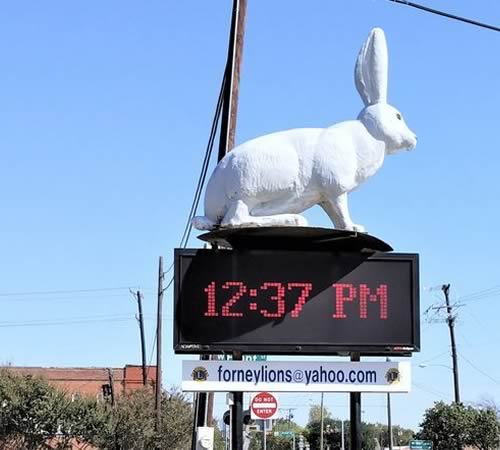
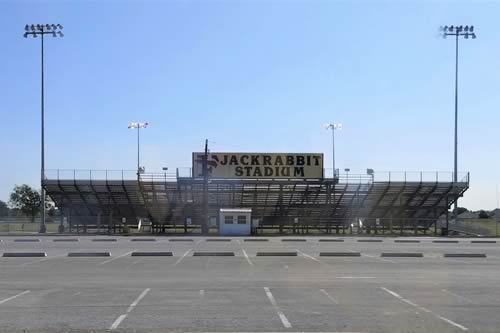
Forney Jackrabbit Stadium
Photo courtesy Clint Skinner, October 2021
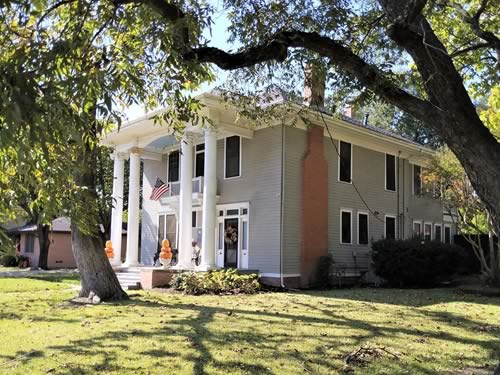
Historical Marker: 306 S. Bois d'Arc St., Forney
Dick P. Moore House
Built in 1910, this home dates from a period of economic boom enjoyed by the town of Forney from 1873 until 1929. It was constructed for Georgia native Dick Parmenas Moore (1869-1943), a merchant who owned a large amount of cotton acreage in the area. His wife, Nancy (Pinkard), resided here until her death in 1958. The American four-square style house features Classical Revival influences in the porch details.
Recorded Texas Historic Landmark - 1985
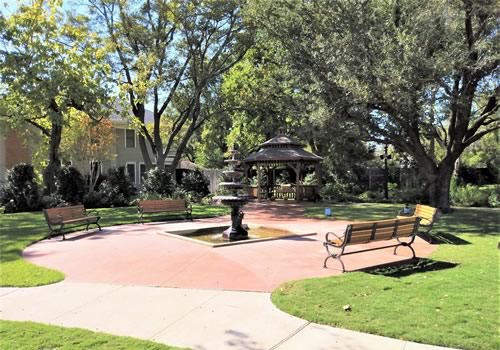
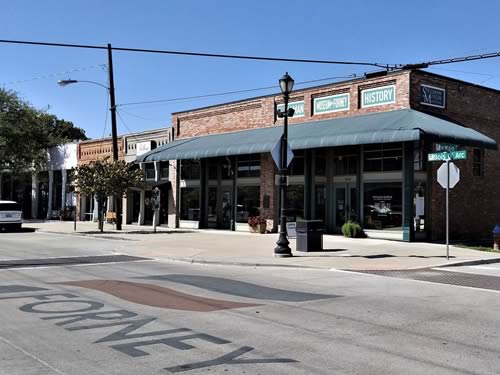
Spellman Museum of Forney History
Photo courtesy Clint Skinner, October 2021
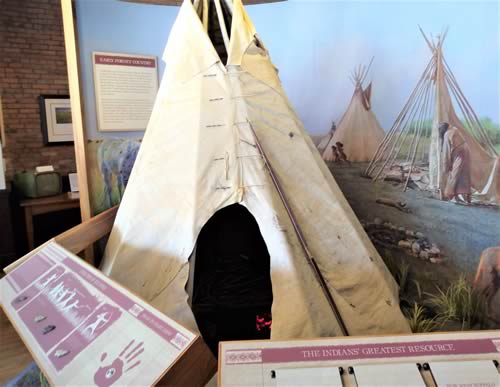

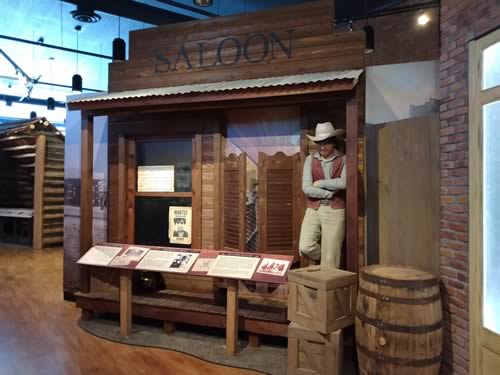
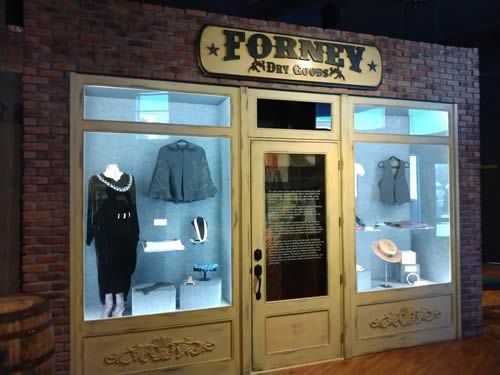
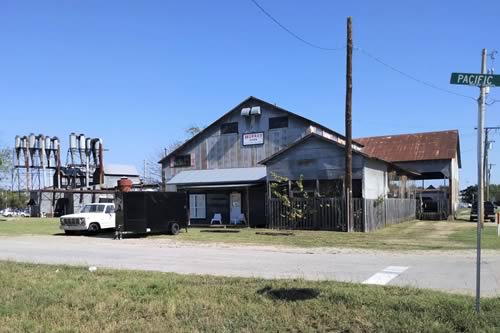
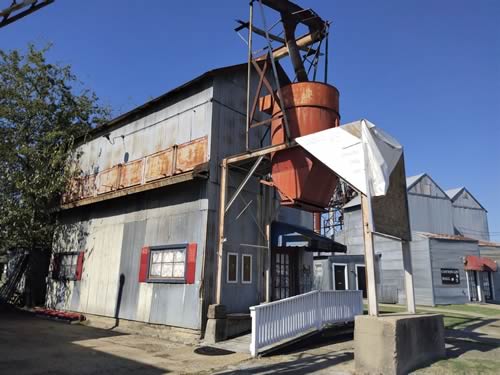
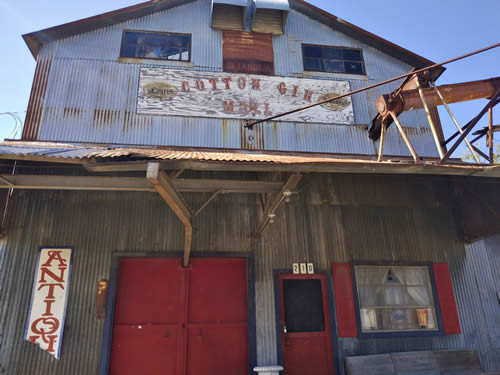
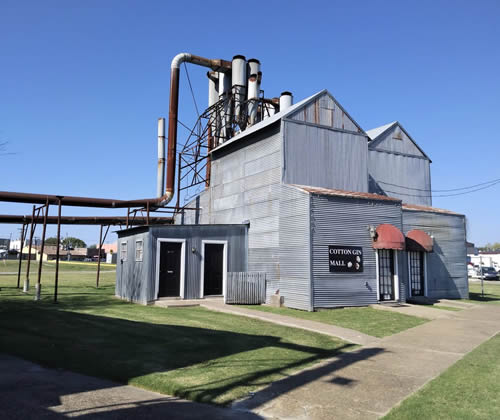
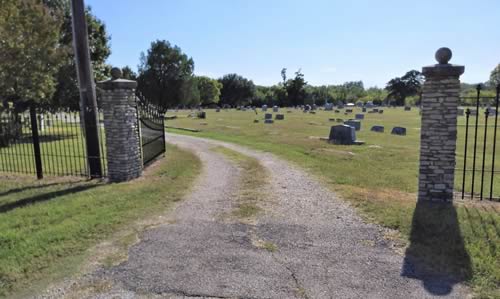
Historical Marker: on Old U.S. 80 (FM 688) near intersection with FM 740. Marker is at entrance to cemetery, Forney
Hillcrest Cemetery
The grave of M. Elizabeth Collins (1813-1867), the earliest marked in this burial ground, predates the settlement of Forney. In 1880 the site was platted and formally set aside as a public cemetery for the growing railroad town. It was later enlarged through additions of adjoining land. Early efforts to provide maintenance for the cemetery included a brief experiment which allowed sheep to graze on the grounds. Burials in Hillcrest Cemetery include those of pioneer area settlers, prominent community leaders, and five known veterans of the Civil War.

Texas Escapes, in its purpose to preserve historic, endangered and vanishing Texas, asks that anyone wishing to share their local history, stories, landmarks and recent or vintage photos, please contact us.


